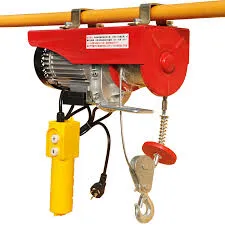


The Essential Guide to Hand Trucks and Forklifts Boosting Efficiency in Material Handling
In the fast-paced world of logistics and warehousing, the efficient movement of goods is pivotal. Hand trucks and forklifts are two essential pieces of equipment that streamline this process, each fulfilling distinct roles while complementing one another in operations. Understanding their functionalities, advantages, and best practices for use can significantly enhance material handling processes.
Understanding Hand Trucks
Hand trucks, also known as dollies or two-wheeled carts, are versatile tools designed for lifting and transporting heavy loads with minimal physical exertion. Typically featuring a simple yet effective design, a hand truck consists of a rectangular frame, two wheels, and a handle. They are ideal for moving boxes, furniture, and various other items in environments that do not require heavy lifting from the ground level.
One of the main advantages of hand trucks is their portability. They are lightweight, easy to maneuver, and do not require a trained operator. This makes them particularly valuable in smaller settings, such as retail stores or home improvement projects, where quick transport of goods is necessary. Additionally, because they are generally less expensive than other types of material handling equipment, they represent a cost-effective solution for businesses of all sizes.
The Role of Forklifts
Forklifts, on the other hand, are powered vehicles equipped with a fork-like attachment for lifting and transporting large loads. They are commonly used in warehouses, construction sites, and manufacturing plants. Forklifts can handle heavier and bulkier items than hand trucks, making them indispensable in environments where moving pallets and substantial materials is routine.
The efficiency of forklifts comes from their ability to lift and stack materials at significant heights, which optimizes storage space. Unlike hand trucks, forklifts require trained operators, as safety is a critical concern. Mismanagement of a forklift can lead to accidents, injuries, and damage to goods. Therefore, ensuring that operators are well-trained and adhere to safety protocols is vital.

Choosing the Right Equipment
When determining whether to use a hand truck or a forklift, several factors should be considered, including the type of goods being moved, the weight of the loads, the layout of the workspace, and the specific needs of the operation. For example, in a small stockroom with lighter boxes, a hand truck may be sufficient. Conversely, in a warehouse filled with heavy pallets, a forklift would be the more appropriate choice.
In many cases, businesses can benefit from using both hand trucks and forklifts, as they serve different purposes while enhancing workflow. Hand trucks can be employed for smaller, lighter loads or for short distances, whereas forklifts can be used for heavier, bulkier items over greater distances or heights.
Best Practices for Safety and Efficiency
Regardless of the equipment used, safety should always be a priority. Regular maintenance on both hand trucks and forklifts is essential to ensure they are functioning correctly. Operators should also undergo safety training specific to the equipment they will be handling.
Employing the right equipment for manual material handling can lead to significant improvements in operational efficiency, reducing physical strain on workers and minimizing the risk of accidents. By carefully selecting between hand trucks and forklifts based on specific needs, businesses can optimize their workflow, ensuring that goods are moved efficiently and safely within their facilities.
In conclusion, understanding the unique benefits of hand trucks and forklifts enables businesses to make informed decisions about their material handling equipment. Proper use and maintenance of these tools can lead to a safer, more productive work environment.



